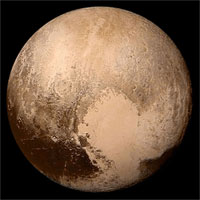 |
Mercury starts to be visible far below Venus in the West on the 26th. It will be well visible in early February. |
 |
Venus is extending its visibility in the West from 2 to 3 hours and sets after 9 pm by the end of the month. |
 |
The thin lunar crescent after New Moon in the West will be near Mercury on the 26th and near Venus on the 27th & 28th. |
 |
Mars rises at 4 am. On the 18th & 19th, it will be 5 degrees north of Antares. Two red objects near each other. |
 |
Jupiter will slowly appear in the morning sky starting the 11th. |
 |
Saturn is not visible. It get occulted by the Sun on the 13th. |
 |
Uranus is 70 degrees high after dusk in the SW. |
 |
Neptune in Aquarius gets visited by Venus on the 27th with a separation of only 10 arc minutes, makiong it possible to fit two planets in the filed of view even at high magnification. |
 |
Minor planet #4, Vesta, is further near Uranus in Cetus and still brighter than 8th magnitude. |